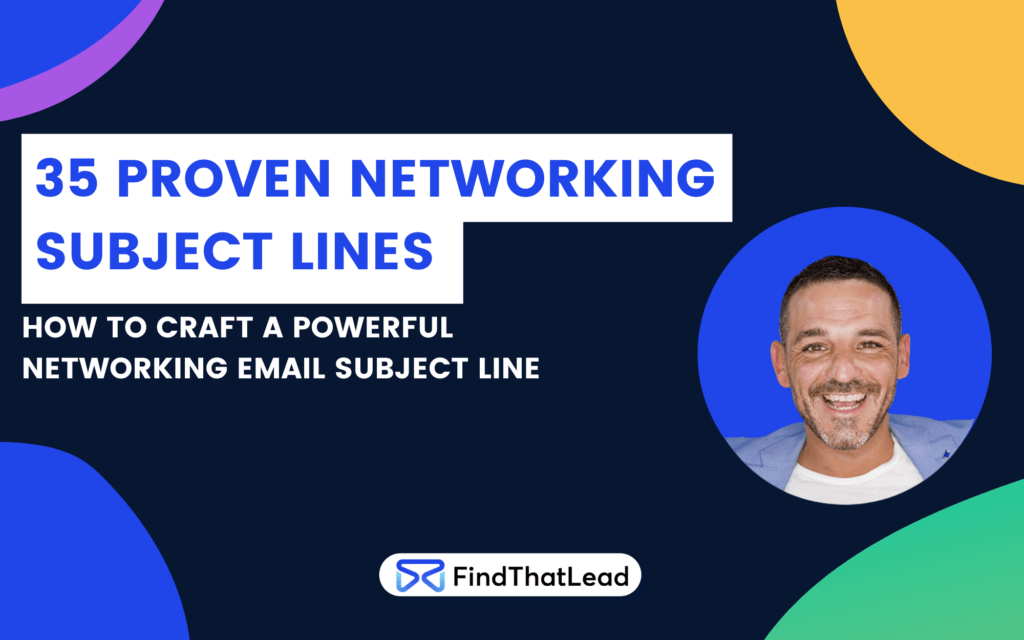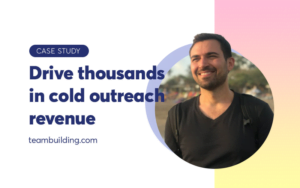Have you ever wondered, “What is a good email subject line for networking?” If so, you’re not alone. Crafting the perfect networking email subject line can be a daunting task.
But don’t worry, we’ve got you covered. In this guide, we’ll share with you the art of creating persuasive subject lines that not only catch the eye but also boost your open rates.
Understanding the Importance of Networking Email Subject Lines
When it comes to networking emails, the subject line holds immense power. It’s the first thing the recipient sees, and it can be the deciding factor between whether your email gets opened or ignored. Let’s delve into why the subject line is so crucial.
Why Does the First Impression Matter?
The first impression is everything, especially in the world of email networking. Your subject line is your first (and sometimes only) chance to entice the reader. If it’s not compelling enough, your email might end up in the trash bin, unread. That’s why it’s crucial to spend time crafting a subject line that accurately represents the content of your email and grabs the recipient’s attention.
Imagine you’re at a networking event. You extend your hand, make eye contact, and introduce yourself. That’s your first impression. Now, translate that to the digital world. Your networking email subject line is the first thing the recipient sees, and it sets the tone for the rest of the email.
A well-crafted subject line can spark curiosity, convey professionalism, and make the recipient eager to read more. It can make your email stand out in a crowded inbox and increase the chances of your message being read. On the other hand, a poorly crafted subject line can make your email seem uninteresting, irrelevant, or even spammy. It can result in your email being overlooked or deleted without a second thought.
How Does the Subject Line Act as a Decision-Maker?
The subject line of your email plays a crucial role in the recipient’s decision-making process. According to a study by Finances Online, 2023, 64% of recipients decide to open or delete emails based on subject lines. This statistic highlights the importance of crafting a compelling subject line for your networking emails.
The subject line serves as a preview of your email. It gives the recipient a glimpse of what to expect from your message.
What is the Impact of a Good Subject Line on Open Rates?
The quality of your subject line can significantly impact your email open rates. A compelling subject line can lead to higher open rates, which means more people reading your message and potentially responding to it.
On the other hand, a lackluster subject line can result in your email being ignored or deleted, leading to lower open rates. This can limit the effectiveness of your networking efforts and hinder your ability to build meaningful connections.
Best Practices for Creating Networking Email Subject Lines
Crafting the perfect networking email subject line is both an art and a science. It requires a balance of creativity and understanding of your audience’s needs and expectations. Let’s explore some best practices that can guide you in this process.
Keep it Short and Sweet
According to a report by Campaign Monitor, subject lines with 17-24 characters have the highest average read rate. So, try to keep your subject line concise and to the point.
For example, a subject line like “Seeking your insights on digital marketing trends” is short, clear, and straight to the point.
The Power of Personalization
Personalization can significantly increase your email open rates. According to a report by SuperOffice, personalized subject lines can boost open rates by 26%. So, consider incorporating the recipient’s name or a relevant detail about them in the subject line.
For instance, “John, loved your article on content marketing trends” is a great way to show that you’ve done your homework and value their work.
Mastering the Art of Name-Dropping
Name-dropping, when done tactfully, can be an effective way to grab the recipient’s attention. If you have a mutual connection or if someone referred you, mention that in the subject line.
A subject line like “Jane Smith recommended I reach out to you” can instantly build trust and make the recipient more likely to open your email.
Asking for Advice, Not Favors
People generally like to help others and share their expertise. So, asking for advice in your subject line can be an effective way to engage the recipient.
A subject line like “Seeking your advice on my marketing strategy” can be more effective than “Can you do me a favor?”
Adapting Subject Lines for Different Networking Scenarios
Networking isn’t a one-size-fits-all endeavor. The context, the relationship with the recipient, and the purpose of your email can all influence the type of subject line that will be most effective. Let’s explore how to adapt your subject lines for different networking scenarios.
Initiating Contact: Your Virtual Handshake
When you’re reaching out to someone for the first time, your subject line is your virtual handshake. It’s your opportunity to make a positive first impression and pique the recipient’s interest.
The key to crafting an effective subject line for initiating contact is to be clear, concise, and relevant. You want to give the recipient a good reason to open your email. For example:
“Hello John, fellow digital marketer looking to connect”
This subject line is effective because it’s clear, concise, and relevant. It tells the recipient who you are, what you do, and why you’re reaching out. It also feels personal and friendly, which can increase the chances of your email being opened.
Prospecting New Leads: Networking as a Sales Strategy
When prospecting new leads, your subject line should pique their interest and offer value. It should make clear what you’re offering and why it’s worth their time.
One effective approach is to offer insights or resources that are relevant to the recipient. For example:
“Exclusive digital marketing insights from [Your Company]”
This subject line is effective because it offers value and piques the recipient’s interest. It suggests that by opening the email, the recipient will gain access to exclusive insights that could benefit them.
Follow-Ups: Keeping the Conversation Going
Following up after an initial interaction is crucial in networking. It’s an opportunity to reinforce the connection you’ve made and keep the conversation going. Your follow-up email should remind the recipient of your previous interaction and suggest the next step.
When crafting the subject line for your follow-up email, it’s important to be specific and personal. Reference your previous interaction and the next steps you discussed. This will help the recipient remember who you are and why you’re reaching out. For example:
“John, following up on our conversation about digital marketing trends”
This subject line is effective because it’s personal, specific, and clear. It reminds the recipient of your previous conversation and signals that you’re interested in continuing the discussion.
Another effective approach is to propose a specific next step in your subject line. This can make the recipient more likely to open your email and respond. For example:
“John, scheduling our next chat on digital marketing trends”
This subject line is effective because it proposes a specific next step and makes it clear what the recipient can expect from your email.
Leveraging Referrals: Building Trust Through Mutual Connections
When you’re reaching out to someone referred to you by a mutual connection, mentioning that in your subject line can increase your email’s credibility. It can instantly build trust and make the recipient more likely to open your email. For example:
“Jane Smith suggested I reach out to you”
This subject line is effective because it leverages a mutual connection to build trust. It suggests that the recipient knows and trusts the person who referred you, which can make them more likely to open your email.
Post-Event Follow-Up: Showing Appreciation and Continuing the Conversation
Networking doesn’t end when the event is over. In fact, some of the most important networking happens after the event, when you follow up with the people you’ve met. Your follow-up email is an opportunity to show appreciation, reinforce the connection you’ve made, and continue the conversation.
When crafting the subject line for your post-event follow-up email, it’s important to be specific and personal. Mention the event and something specific you discussed. This will help the recipient remember who you are and why you’re reaching out. For example:
“John, great meeting you at [Event Name] – following up on our chat about [Topic]”
This subject line is effective because it’s personal, specific, and clear. It reminds the recipient of who you are, where you met, and what you talked about. It also signals that you’re interested in continuing the conversation.
Another effective approach is to show appreciation in your subject line. This can make the recipient feel valued and more likely to respond. For example:
“John, appreciated our insightful conversation at [Event Name]”
This subject line is effective because it shows appreciation and reminds the recipient of the positive conversation you had at the event.
Remember, the goal of your post-event follow-up email is to continue the conversation and build a meaningful connection. So, make sure your subject line reflects this.
Examples of Effective Networking Email Subject Lines
Having discussed the principles of crafting effective networking email subject lines, let’s now delve into some practical examples. These examples can serve as a springboard when you’re crafting your own subject lines. Remember, the most effective subject lines are personalized, clear, and compelling.
5 Subject Line Examples for Initial Contact
Making the first contact can be nerve-wracking, but a well-crafted subject line can help you make a strong first impression. Here are some examples, each designed to establish a connection and express a clear purpose:
- “Hello [Name], fellow [Industry] enthusiast looking to connect” – This subject line establishes a common ground and expresses a desire to connect.
- “Seeking your expert advice on [Topic], [Your Name]” – This subject line flatters the recipient’s expertise and makes your intention clear.
- “[Your Name] looking to learn more about [Their Company/Industry/Role]” – This subject line shows your interest in the recipient’s work.
- “Inspired by your work in [Industry/Project], [Your Name]” – This subject line compliments the recipient and establishes a positive tone.
- “[Your Company] & [Their Company]” – This subject line is just… Wow.

5 Subject Line Examples for Prospecting New Leads
When prospecting new leads, your subject line should pique their interest and offer value. Here are some examples, each designed to show that you’ve done your homework and have something valuable to offer:
- “Hello [Name], sharing insights on [Topic]” – This subject line offers valuable insights, which can entice the recipient to open the email.
- “[Your Company] can help [Their Company] with [Problem]” – This subject line identifies a problem the recipient has and offers a solution.
- “New strategies for [Problem] – thought you might be interested” – This subject line offers new strategies, which can intrigue the recipient.
- “Exclusive [Industry] insights from [Your Company]” – This subject line offers exclusive insights, which can make the recipient feel special.
- “[Your Company]’s solutions for your [Problem]” – This subject line directly addresses a problem the recipient has and offers your company’s solutions.
5 Subject Line Examples for Follow-Up Emails
For follow-up emails, your subject line should reference your previous interaction and suggest the next step. Here are some examples, each designed to remind the recipient of your previous interaction and prompt them to continue the conversation:
- “Great chatting at [Event], [Name]. Next steps?” – This subject line reminds the recipient of your recent interaction and suggests moving forward.
- “[Name], following up on our conversation about [Topic]” – This subject line reminds the recipient of your previous conversation and the topic you discussed.
- “Continuing our discussion on [Topic]” – This subject line suggests that you’re interested in continuing the conversation about a specific topic.
- “Next steps after our productive chat” – This subject line suggests that your previous chat was productive and that you’re eager to move forward.
- “Thoughts on our conversation at [Event]” – This subject line invites the recipient to share their thoughts on your previous conversation, which can encourage a response.
5 Subject Line Examples for Connecting with Referrals
When you’re reaching out to someone referred to you by a mutual connection, mention that in your subject line. It can instantly build trust and make the recipient more likely to open your email. Here are some examples, each designed to leverage your mutual connection and build trust:
- “[Mutual Connection’s Name] suggested I reach out” – This subject line leverages your mutual connection and suggests that the referral came from them.
- “Fellow friend of [Mutual Connection’s Name] looking to connect” – This subject line establishes a common connection and expresses a desire to connect.
- “Connecting through [Mutual Connection’s Name]” – This subject line suggests that you’re reaching out because of your mutual connection.
- “[Mutual Connection’s Name] thought we should meet” – This subject line suggests that your mutual connection believes you and the recipient should meet.
- “Introduction via [Mutual Connection’s Name]” – This subject line makes it clear that you’re reaching out because of a referral from your mutual connection.
Implementing Your Networking Email Subject Line Strategy
Once you’ve crafted your networking email subject lines, the next step is to implement your strategy. This involves testing your subject lines, adapting to feedback and evolving trends, and ensuring consistency across all your emails.
How to Test Your Email Subject Lines
Testing is a critical part of any email marketing strategy. It allows you to understand what resonates with your audience and what doesn’t. Here’s a simple process to test your subject lines:
- Create two versions of the same email with different subject lines. Each version should have a unique subject line that you want to test.
- Send each version to a different segment of your audience. Make sure the segments are similar in terms of demographics and engagement levels to ensure a fair test.
- Analyze the results. Look at the open rates for each email to see which subject line performed better.
Tools like MailChimp and Campaign Monitor offer built-in A/B testing features that can simplify this process. Remember, the goal is to learn about your audience’s preferences and use that knowledge to improve your future emails.
Adapting to Feedback and Evolving Trends
The digital world is constantly evolving, and so are the trends in email marketing. To stay effective, you need to keep up with these changes and be ready to adapt your strategy accordingly. Here are some ways to do this:
- Stay updated with the latest email marketing trends. Regularly read industry blogs, attend webinars, and follow thought leaders on social media to keep your knowledge up-to-date.
- Listen to your audience. Pay attention to the feedback from your recipients. If certain types of subject lines are getting more opens, use that style more. If a subject line style is not working, don’t be afraid to ditch it and try something new.
Ensuring Consistency Across all Emails
While the subject line is crucial, it’s also important to ensure consistency across your emails. The content of your email should match the promise made in your subject line. Here’s why:
- It builds trust. If your email content consistently delivers on the promise of your subject lines, your recipients will trust your emails and be more likely to open them in the future.
- It improves your reputation. Misleading subject lines can lead to high unsubscribe rates and damage your reputation. On the other hand, consistent and honest subject lines can enhance your reputation and increase your email engagement rates.
Remember, your subject line is just one part of your email. It needs to work in harmony with your email content to create a positive and consistent experience for your recipients.
Conclusion: The Power of a Well-Crafted Networking Email Subject Line
In the world of networking, the power of a well-crafted email subject line is undeniable. It’s more than just a title—it’s your first impression, your virtual handshake, and your golden ticket to securing the recipient’s attention.
Throughout this guide, we’ve explored the importance of networking email subject lines and how they can make or break your email engagement. We’ve delved into the best practices for creating compelling subject lines, from keeping it short and sweet to the power of personalization and the art of name-dropping.
We’ve also discussed how to adapt your subject lines for different networking scenarios, whether you’re initiating contact, prospecting new leads, following up, or leveraging referrals. Each scenario requires a unique approach, and understanding this can significantly improve your networking success.
Remember, the world of networking is at your fingertips, and the right subject line is the key to unlocking its potential. So, go ahead, craft compelling subject lines, and watch your networking efforts soar. Why don’t you start now!







 BONUS:
BONUS: The Challenge: Join this free course and I guarantee that after 5 days you will have the necessary skills to start generating B2B clients Growth Hacking and Prospecting techniques.
The Challenge: Join this free course and I guarantee that after 5 days you will have the necessary skills to start generating B2B clients Growth Hacking and Prospecting techniques.